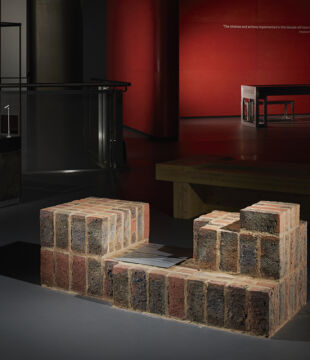
Details
Location: Birmingham
Brick Manufacturers: Ibstock PLC / Wienerberger Limited
Brick Names: Britley Old English / Pagus Grey
Architect: OMI Architects
Brickwork Contractor: HH Smith & Sons Co. Ltd
About the project
OMI Architects were approached by The Society of Jesus, otherwise known as the Jesuits, to alter and extend their existing novitiate in Harborne, Birmingham known as Manresa House. Considered, by the community, as a ‘monastery in the city’, the building provides a home for new entrants into the Society to spend the first two years of their training mentored and supported by the permanent senior community.
Sat within a large garden area, the scheme consists of 24 bedrooms for guests, novices and senior community as well as a dining room, kitchen, offices, meeting rooms, a library and a new chapel. Based on historic monastic arrangements the building was conceived as a series of wings which radiate out from a retained nineteenth century house and these wings allow for varying degrees of privacy to be maintained whilst also giving clear legibility to each of the building elements.
The primary external wall material was a bold red brick that was chosen to complement the brickwork of the retained house and ensure that new and old have a harmonious visual relationship. Discrete areas of a recessed dark grey brick occur on the formal garden elevations, punctuating these elevations and providing visual definition to each of the bedrooms that look out onto this landscaped area.
Internally a series of quiet, calming spaces have been created that balance the need for privacy with the desire to foster a strong sense of community. The bedroom wings are situated at the quieter western end of the site, whilst the more communal spaces are located to the east forming the primary, public facing, elevation. The primary external brickwork is used internally to mark the transitions between the various wings that make up the building and the effect of this is give each area its unique character.
The chapel is located at the northern end of the site and is provided with a degree of separation from the rest of the building. Externally this manifests itself with a curved brick frontage that marks the east end that contains the altar within. Internally, as with the other wings, brickwork marks a series of transition spaces that mediate between domestic and spiritual spaces. A stoup, a basin for holy water, is situated at the chapel entrance and this is enclosed in a curved brick niche sitting on a brickwork plinth. This plinth then follows through into the chapel creating a low-level datum through the chapel space and rises to form piers that demarcate the entrance to a separate side chapel, or alcove to the north.
Finally, responding to “Laudato Si”, an encyclical issued by Pope Francis, the community were fully committed to making long-term sustainable choices. The extensive use of brickwork, internally and externally, with deeply recessed windows and strongly modelled elements, such as the chimney on the south elevation, utilised bricks physical and perceived strength and longevity reflecting the community’s long-term commitment to the site and its continuation as a place of learning and spirituality.
Sponsored by ARC Building Solutions

ARC Building Solutions is a specialist manufacturer of cavity fire barriers and cavity closers, based in Leeds, West Yorkshire. Established in 2008, ARC specialises in bringing unique and innovative products to market. Designed to solve real world on-site challenges, ARC’s products help to deliver safer and more sustainable homes and buildings. ARC’s wealth of technical experience ensures that the best solution can be identified from our comprehensive range of products.

















